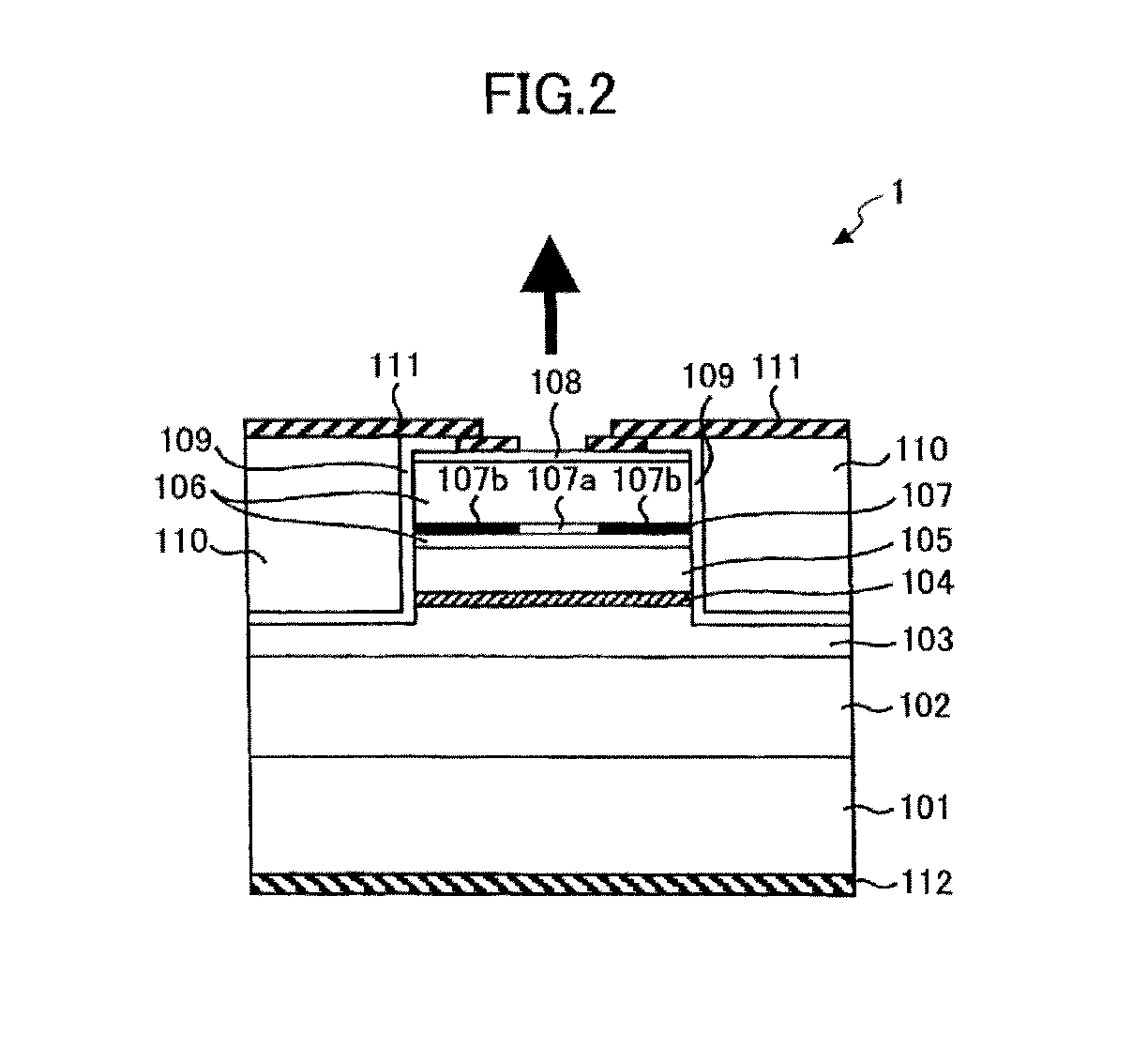Surface-emitting laser array, optical scanning device, and image forming device
a laser array and surface-emitting technology, applied in the direction of lasers, laser optical resonator construction, laser details, etc., can solve the problems of difficult to carry out uniform mesa etching on the surface of the wafer, difficult to control the depth of etching, and difficult to carry out mesa etching. the effect of preventing the exposure preventing the oxidization of the first reflection layer
- Summary
- Abstract
- Description
- Claims
- Application Information
AI Technical Summary
Benefits of technology
Problems solved by technology
Method used
Image
Examples
Embodiment Construction
[0087]A description will be given of embodiments of the invention with reference to the accompanying drawings.
[0088]FIG. 1 is a plan view of a surface-emitting laser array in an embodiment of the invention. As shown in FIG. 1, the surface-emitting laser array 100 of this embodiment includes surface-emitting laser elements 1-32, pads 51-82, and wires W1-W32.
[0089]The surface-emitting laser elements 1-32 are arranged in the two-dimensional formation of four rows×eight columns. Each of the surface-emitting laser elements 1-32 has the rectangle form whose one side is 16 micrometers.
[0090]And the columns of four surface-emitting laser elements 1,9,17,25 / 2,10,18,26 / 3,11,19,27 / 4,12,20,28 / 5,13,21,29 / 6,14,22,30 / 7,15,23,31 / 8,16,24,32 are arranged in the sub-scanning direction. And the rows of eight surface-emitting laser elements 1-8 / 9-16 / 17-24 / 25-32 are arranged in the main scanning direction.
[0091]The rows of the eight surface-emitting laser elements 1-8 / 9-16 / 17-24 / 25-32 arranged in the mai...
PUM
 Login to View More
Login to View More Abstract
Description
Claims
Application Information
 Login to View More
Login to View More - R&D
- Intellectual Property
- Life Sciences
- Materials
- Tech Scout
- Unparalleled Data Quality
- Higher Quality Content
- 60% Fewer Hallucinations
Browse by: Latest US Patents, China's latest patents, Technical Efficacy Thesaurus, Application Domain, Technology Topic, Popular Technical Reports.
© 2025 PatSnap. All rights reserved.Legal|Privacy policy|Modern Slavery Act Transparency Statement|Sitemap|About US| Contact US: help@patsnap.com



